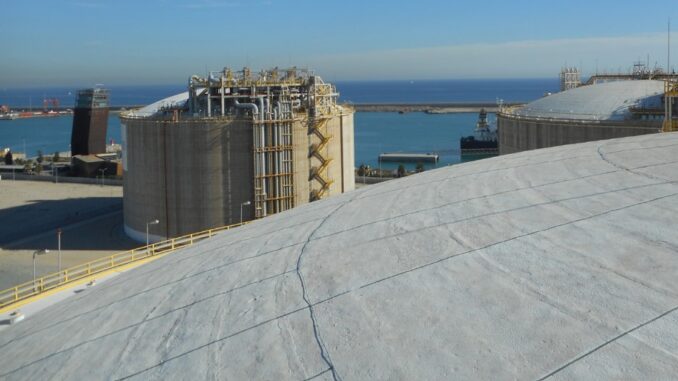
LNG imports decreased by 26 percent year-on-year to 14.2 TWh in September and accounted for 58.9 percent of the total gas imports.
Previously, Spanish LNG imports decreased by 41 percent year-on-year to 13.2 TWh in August.
Imports decreased by 33.1 percent year-on-year to 13.7 TWh in July, and dropped by 24.4 percent year-on-year to about 16.1 TWh in June.
Including pipeline imports from Algeria (6.77 TWh), France, and Portugal, gas imports to Spain reached about 25.9 TWh last month, a drop from some 30.8 TWh in Septembert last year, according to the monthly report by Enagas.
Moreover, national gas demand in September decreased by 14.1 percent year-on-year to 22.6 TWh.
Demand for power generation dipped by 40.1 percent year-on-year to 6 TWh last month, while conventional demand increased by 1.9 percent to 16.6 TWh, the LNG terminal operator said.
Storage facilities were 100 percent full in September, compared to 97 percent in the same month last year and 100 percent in the prior month.
Enagas operates a large network of gas pipelines in Spain and has three wholly-owned LNG import plants in Barcelona, Huelva, and Cartagena.
It also owns 75 percent in the Musel LNG facility, 50 percent in the BBG regasification plant in Bilbao, and 72.5 percent of the Sagunto plant, while Reganosa operates the Mugardos plant.
In August last year, Spanish power group Endesa delivered the first commercial cargo to the El Musel LNG terminal in Gijon.
Endesa completed the first reloading operation at the facility in April of this year.
There were no ship unloading or loading operations at the facility during September.
The seven operational Spanish LNG regasification terminals unloaded 16 cargoes last month, down by seven cargoes compared to August last year.
The US was the biggest LNG supplier to Spain in September with 6 TWh, up from 3.8 TWh last year, and the country was followed by Russia with 3.36 TWh, almost flat compared to 3.26 TWh last year.
During September, Spain also received 2.93 TWh from Algeria, down on year compared to 5 TWh, 1.15 TWh from Nigeria, down from 6.19 TWh last year, 0.9 TWh from Congo, and 0.87 TWh from Qatar.
Russia was the biggest LNG supplier to Spain in April, May, June, July, and August, while the US was the biggest supplier in January and February.
Spanish LNG terminals loaded 0.67 TWh in September, up by 6.3 percent year-on-year.
Reloads also rose from 0.35 TWh in August, the lowest monthly figure this year, but dropped compared to 2.49 TWh in July, the highest monthly figure this year.
The LNG terminals loaded 1.81 TWh in June, 1.19 TWh in May, 0.45 TWh in April, 0.56 TWh in March, 1.07 TWh in February, and 0.92 TWh in January.
During September, the Barcelona terminal reloaded 0.37 TWh, and the Huleva terminal reloaded 0.26 TWh.
Enagas said the loaded volumes were 62.3 percent used for bunkering and the rest landed in Europe.
During January-September, 51.4 percent of the loaded volumes were used for cooling down/gassing up of tankers, 29.8 percent of the volumes landed in Europe, and 18.5 percent of the volumes were used for bunkering.
Moreover, truck loading operations at the LNG terminals rose 11.1 percent in September year-on-year to 1026.
The Huelva LNG terminal completed 238 truck loads in September, while the Barcelona terminal completed 201 truck loads and the Sagunto terminal completed 188 truck loads, the data shows.
We give you energy news and help invest in energy projects too, click here to learn more






